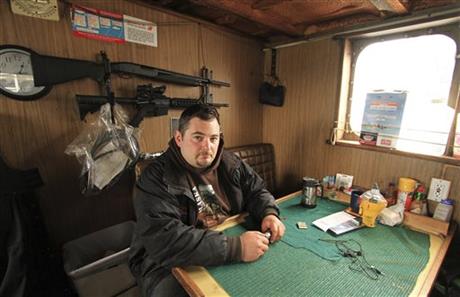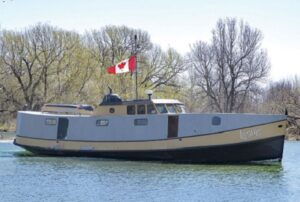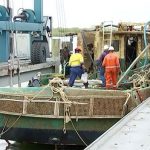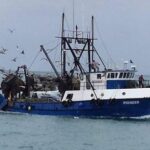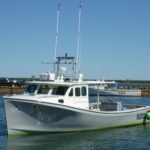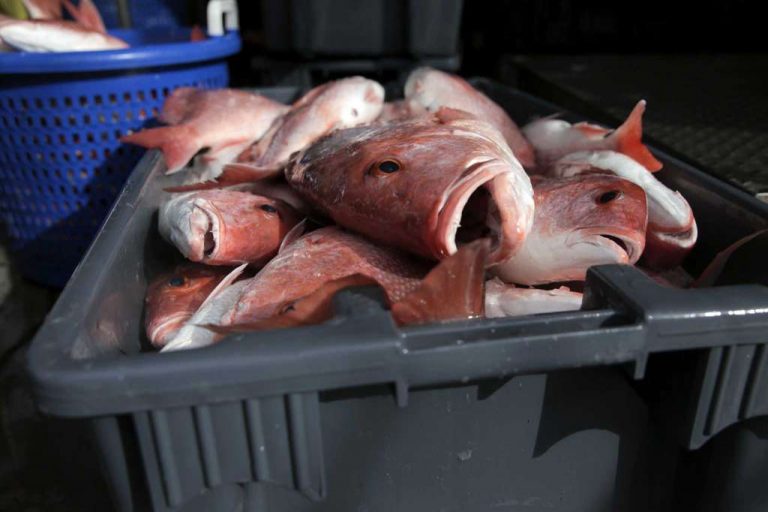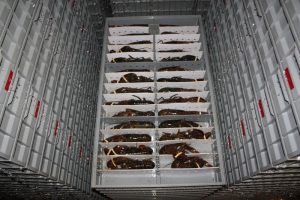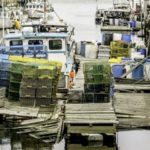Tag Archives: Sea otters
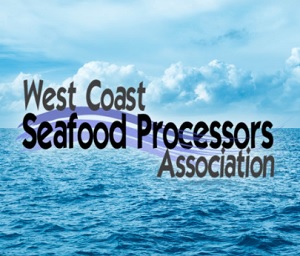
Seafood Industry Professions Raise Concerns About Reintroduction Of Sea Otters
West Coast Seafood processors says that their membership is concerned about a study on the impacts of sea otters on coastal fishing. The West Coast Seafood Processors Association says that they join other ocean stakeholders in a lack of confidence about concerns raised about the otters. “We remain very concerned that the issues we identified in our letter last year will not be adequately addressed in the Fish and Wildlife Service’s cost and feasibility study,” West Coast Seafood Processors Association Executive Director Lori Steele said. >click to read< 18:24
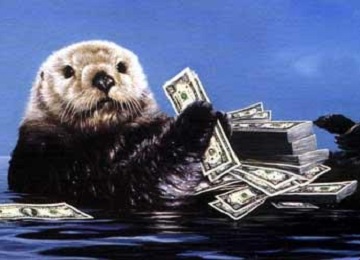
“Sea Otters To End West Coast Fishing” Huh! fishermen need to suck it up and “find another job?
For decades, Julie Packard has spearheaded a campaign to curtail fishing under the guise of “conservation.” As this campaign has evolved, it has become a tale of precaution. The campaign started as a need to save the sea otter. Did otters really need “saving?” That is entirely debatable, and was, extensively. The result was clearly non-scientific and summarized as a “choice” between fishing or sea otters. Friends Of The Sea Otter shill Steve Schmeck was quoted saying fishermen need to suck it up and “find another job.” The California urchin divers took issue and were represented by Pacific Legal Foundation in litigation. USFWS cited inability to manage the otter population. The result was USFWS having zero oversight and getting away with lying and breaking the law.,,, Fast forward to today: The Monterey Bay Aquarium & Julie Packard have infiltrated the government and the economic chain. The money, influence and placement of persons in nonprofits, universities and government positions has created an oligarchy and a serious ethics problem. This is a big read with links and information from California Sea Urchin Diver Jeff Crumley. > Click to read< 22:01
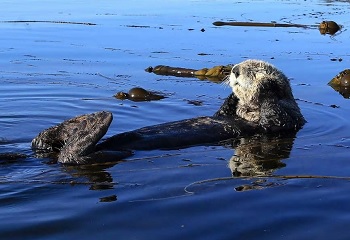
As the marine mammal takes a bite out of the fishing industry, A modest proposal for hunting sea otters
Phil Doherty doesn’t think sea otters are cute. Sure, he can see why tourists might get a kick out of watching the fuzzy critters reclining in waves with clams on their bellies, fixing to chow down. But to Doherty, co-director of the Southeast Alaska Regional Dive Fisheries Association and the commercial fisherman he represents, those cuddly otters are eating their bottom line. >click to read< 15:07
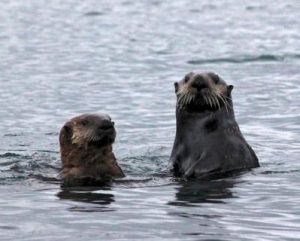
Nonprofit would bring sea otters back to Oregon. Commercial fishing industry isn’t so sure
“For about 110 years now, there’s been a big hole in our environment,” said Peter Hatch, a Siletz tribal member living in Corvallis.,, Hatch recently joined the board of a new nonprofit dedicated to bringing the sea otter back to Oregon waters. The group is named the Elakha Alliance,,, But excitement is not the unanimous response. “The notion of full-scale reintroduction of otters makes me feel very apprehensive because we don’t know how that will affect commercial fisheries,” said Newport crabber Bob Eder. Eder’s concerned that reintroduction could change his industry. >click to read<20:33
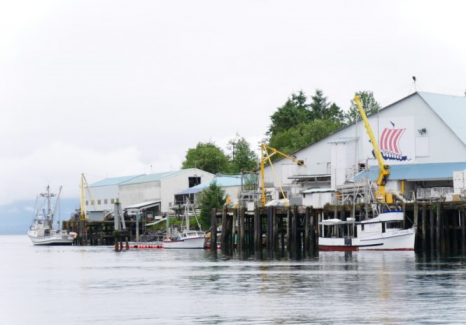
Optimism scarce as commercial fisheries start up in Southeast
Activity is picking up in the harbors in Petersburg this week as fishing boats and tenders prepare for the start of several commercial fishing seasons, but optimism is a little scarce on the docks. Fishermen this summer are feeling the impacts of reduced catches, low forecasts and increasing competition from marine mammals. In South Harbor, Charlie Christensen is readying the Erika Ann for some tendering work in the early summer. Then he’ll switch over to seining once pink salmon start coming in. He has a long list of bad news for his fishing season, stretching back to management decisions by the Alaska Department of Fish and Game for golden or brown king crab. He also points to whale predation on black cod,,, >click to read< 17:22

Alaska Dive Fishermen Plead for Relief from Sea Otters
Phil Doherty, head of the Southeast Alaska Regional Dive Fisheries Association, is working to save the livelihood of 200 southeast Alaska fishermen and a $10 million industry but faces an uphill struggle against an opponent that looks like a cuddly plush toy. Fishermen have watched their harvest shrink as sea otters spread and colonize, Doherty said. Divers once annually harvested 6 million pounds (2.7 million kilograms) of red sea urchins. The recent quota has been less than 1 million pounds (454,000 kilograms). “We’ve seen a multimillion-dollar fishery in sea urchins pretty much go away,” he said. >click to read<12:46
Dive fishermen and sea otters face complex competition – “They’re totally eating us out of house and home.”
 What many Americans consider to be a cute, back-floating mammal is a pest, even a thief, to some Southeast Alaskan fishermen. Humans and sea otters enjoy consuming the same bottom-dwelling seafood: Dungeness crabs, clams, sea cucumbers and urchins. Competition between dive fishermen and sea otters for those resources has intensified as the otter population grows. Wadley has been a for 27 years. She dove for abalone until the dive fishery closed in 1996. “We had an abalone fishery here until the otters ate us out of it,” Read the article here 08:05
What many Americans consider to be a cute, back-floating mammal is a pest, even a thief, to some Southeast Alaskan fishermen. Humans and sea otters enjoy consuming the same bottom-dwelling seafood: Dungeness crabs, clams, sea cucumbers and urchins. Competition between dive fishermen and sea otters for those resources has intensified as the otter population grows. Wadley has been a for 27 years. She dove for abalone until the dive fishery closed in 1996. “We had an abalone fishery here until the otters ate us out of it,” Read the article here 08:05
Big mammals vs. big oil: New pipeline puts humpback whales at risk
 In a deep fjord in British Columbia called the Douglas Channel, where the Kitimat River pours runs of Chinook salmon into the Pacific Ocean, fishermen see singing humpback whales fling themselves into the air. Now the humpbacks are the flashpoint of an environmental battle. Environmentalists cried foul last month when the Canadian government stripped the whales of protections,,Read more here 20:58
In a deep fjord in British Columbia called the Douglas Channel, where the Kitimat River pours runs of Chinook salmon into the Pacific Ocean, fishermen see singing humpback whales fling themselves into the air. Now the humpbacks are the flashpoint of an environmental battle. Environmentalists cried foul last month when the Canadian government stripped the whales of protections,,Read more here 20:58
Nearly 26 thousand and growing fast – Otters, fishing and hunting – finding a balance in Southeast AK
 This is Fish Radio. I’m Laine Welch – Finding a balance between fishing, hunting and sea otters. More after this @fishradio Otter hunting increases – by Matt Lichtenstein -The otter’s rapid population growth and voracious appetite for shellfish has been a major concern for commercial crabbers, dive fishermen and fishery managers who blame the animals for a loss of productive fishing grounds. more@kfsk 17:25
This is Fish Radio. I’m Laine Welch – Finding a balance between fishing, hunting and sea otters. More after this @fishradio Otter hunting increases – by Matt Lichtenstein -The otter’s rapid population growth and voracious appetite for shellfish has been a major concern for commercial crabbers, dive fishermen and fishery managers who blame the animals for a loss of productive fishing grounds. more@kfsk 17:25
PLF challenges bureaucrats’ decision to ignore Congress, let sea otters decimate Southern California fisheries
 We represent four organizations that rely on the health of SoCal fisheries—the California Sea Urchin Commission, California Abalone Association, California Lobster and Trap Fishermen’s Association, and the Commercial Fishermen of Santa Barbara. The otter threatens the ability of these fisherman to put food on their table, literally. And the effects will ripple because of the many local businesses that are related to fishing. [email protected]
We represent four organizations that rely on the health of SoCal fisheries—the California Sea Urchin Commission, California Abalone Association, California Lobster and Trap Fishermen’s Association, and the Commercial Fishermen of Santa Barbara. The otter threatens the ability of these fisherman to put food on their table, literally. And the effects will ripple because of the many local businesses that are related to fishing. [email protected]
Shellfish Industry Lobs Bomb at Sea Otters @courthousenews
Lawsuit challenges sea otter boundary change @the heraldnews
Alaska Fish Radio – Laine Welch – A grim outlook for sea otters versus Southeast Alaska fisheries.
![]() Sea otters are cleaning out valuable commercial fisheries in Southeast Alaska – they have been at it for decades. A second report updates the financial hit the otters have caused to the region’s fisheries since 2005. continued
Sea otters are cleaning out valuable commercial fisheries in Southeast Alaska – they have been at it for decades. A second report updates the financial hit the otters have caused to the region’s fisheries since 2005. continued
My Turn: Growing sea otter population in Southeast Alaska focus of upcoming symposium
![]() Sea otters,
Sea otters, which were hunted to extinction in Southeast Alaska during the 18th and 19th century fur trade, were reintroduced in the 1960s. In this region, 403 animals were transplanted to six sites, predominantly on the outer coast. The population is now estimated at about 25,000 and ranges continuously along the outer coast of Southeast Alaska and interior areas including Glacier Bay. Read more here
which were hunted to extinction in Southeast Alaska during the 18th and 19th century fur trade, were reintroduced in the 1960s. In this region, 403 animals were transplanted to six sites, predominantly on the outer coast. The population is now estimated at about 25,000 and ranges continuously along the outer coast of Southeast Alaska and interior areas including Glacier Bay. Read more here






